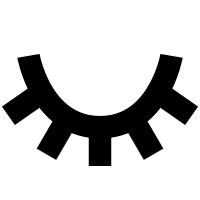From science fiction to reality: The Clone Wars
- Jacques Lorlin
- Jan 9, 2020
- 3 min read
There are phrases which, at first glance, seem contradictory. In literature, it's called oxymoron (putting the words "dim" and "starlight" together, for example). In biology, particularly animal biology, can the words "cloning" and "ethics" logically coexist? Nothing is less certain, and the debate rages.
Calves, cows, pigs ...
Contrary to popular belief, Dolly, the world's most famous sheep, born in 1996, was not the first cloned animal. A carp—no name given—preceded Dolly by many years, being born in 1963 in China. But Dolly was the first mammal, and since her birth the cloned menagerie has expanded to include mice, cows, pigs, horses, cats, dogs, monkeys, and even camels ... The principle is simple: replace the nucleus of an unfertilized egg with that of a cell from the source animal. After this relocation, the result is a copy whose genetic material has nothing to do with the birth mother, who is reduced simply to the function of her uterus. The practice is a little trickier, and the success rate is tiny, but inevitably it will gradually increase through the development of knowledge and through technological advances.
Who clones what and why?
Experts in many fields have justified the relevance of animal cloning as central to what they do or what they need to achieve. Some breeders dream of calves or pigs immunized against disease with optimal meat quality that is perfectly identical from one individual animal to another. Then there's the ability to multiply the few representatives of a species in danger of extinction, or to resurrect a recently extinct animal, thanks to a frozen sample. Doesn't that make cloning beneficial to biodiversity? The Pyrenean ibex, declared extinct in 2000, enjoyed a fleeting resurrection, until a newly-born cloned ibex died of respiratory failure. Bolder still, why not revive fauna long since erased from the surface of the Earth? Would that not be wonderful for human knowledge? It would be a version of the fantasy portrayed in 'Jurassic Park'. Russian scientists aren't quite going back to the dinosaurs, but they do plan to clone a mammoth that died 43,000 years ago and that is particularly well preserved for its age, using the uterine hospitality of one of today's elephants. For the ultimate in humanism why not reproduce your faithful pet identically and infinitely so that the death of your darling triggers no tear, since a perfect copy will take its place? In 2013, a wildlife magazine revealed the existence of an institute proposing just such a pet cloning service in South Korea.
Be fruitful and multiply
But all is not rosy as a transgenic pig in the world of animal cloning. Cloned individuals tend to age prematurely, and die in their mid-teens of diseases generally reserved for much older animals (that is what happened to the late Dolly, among others). Some cloned animals bred for the table, are prone to developing diseases or other weird and mysterious defects, latent or declared, which no one can swear on the head of his surrogate mother would have no effect on the health of eaters of cloned cutlets or steaks. Ethics Ethics ... ... Repeat to persuade. It works sometimes. It's probably easier if we consider the problem only from the human angle. What about animals? Doesn't their opinion matter—and should we care? Neither more nor less that one cares about other aspects of any animal's delicate destiny. Why worry about the point of view of a pig on the subject of the cloning of hams, while ignoring the conditions in industrial pig farms? Here's a dream from a future time, perhaps not so far off: Neanderthal man makes his comeback, cloned from a fossilized molar and delivered by a young surrogate mother who had a large debt to pay off. He strokes a baby mammoth at the entrance of a superbly restored concrete cave under the light of visitors' smartphone flashes. This is an ethical zoo, where residents will benefit from 100% organic food.







Comments